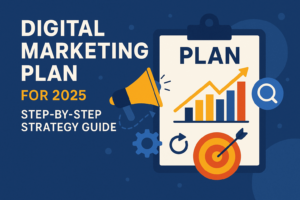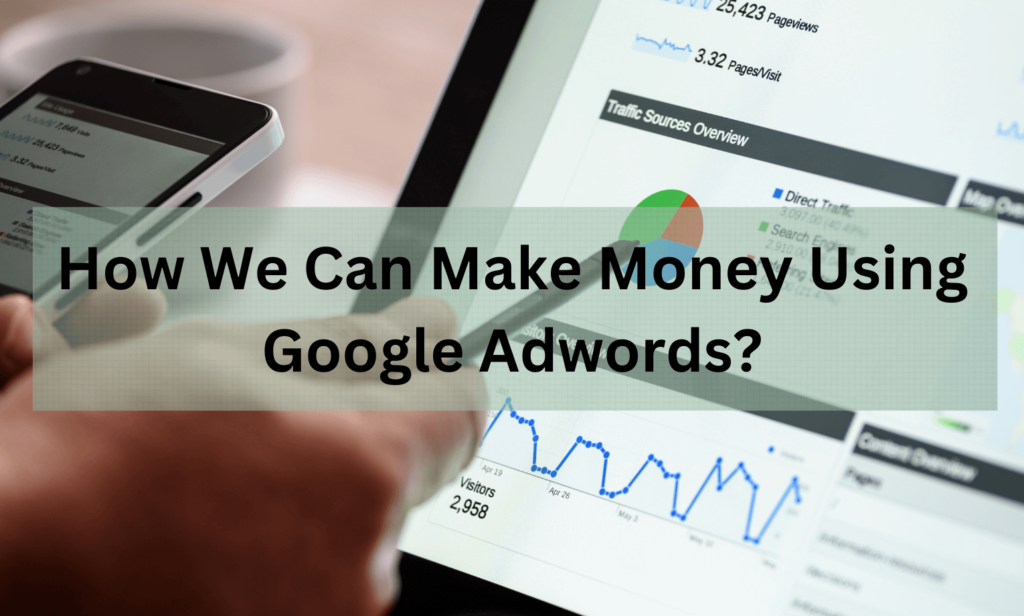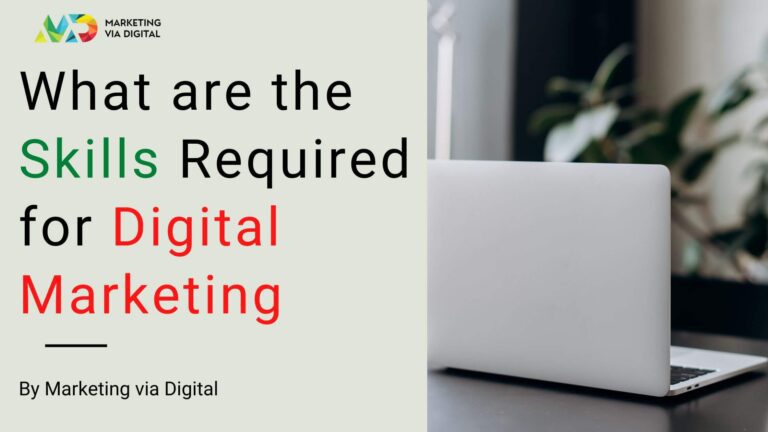If you’re reading this, chances are you’re either launching something new or trying to give your business the online push it needs. In either case, one thing’s for sure: you need a digital marketing plan.
And no, it doesn’t have to be complicated or packed with jargon. As a new founder, a small business owner, or an influencer, creating a marketing plan from scratch is doable without hiring a huge agency.
Track your results. What’s working? What isn’t?

1. Start with a Simple Goal
Understand your Buyer’s POV, their needs, and desires.
Instead of considering this: What do I want to achieve over the next 90 days?
It could be:
- Getting more traffic to your website
- Selling more products
- Getting leads from your social media pages
The more focused your marketing goals and objectives, the more manageable planning becomes. Once your goal is well-defined, like ‘I aim to raise sales by 25% in the next 3 months,’ your strategy starts to form.
2. Know Who You’re Talking To
It’s tempting to market to “everyone.” But when you try to speak to everyone, you end up reaching no one. You need to define your audience.
Think about:
- Age and location
- What problems are they trying to solve?
- Where do they hang out online
- What kind of content grabs their attention
If you’re selling fitness gear, your approach will be completely different than offering legal services. So, the more detailed you are here, the better your online marketing strategy will perform.
3. Research Your Competition
This step is powerful. Take 30 minutes and look at 3–5 competitors. Check their website. Browse their Instagram. See what ads they’re running (you can use Facebook’s Ad Library for this).
Questions to ask:
- What kind of content are they sharing?
- Are they blogging regularly?
- Which platforms are they using the most?
- Are they getting comments or likes?
This doesn’t mean you should copy them. It just gives you ideas and helps you see what’s working in your industry and what gaps you can fill.
4. Pick the Right Channels (Don’t Try to Do Everything)
One of the common mistakes people make is trying to be everywhere online. Being on Facebook, Instagram, Twitter, LinkedIn, and YouTube isn’t a requirement for success.
Start with 1–2 platforms where your target audience already spends time.
For example:
- If you’re in B2B, LinkedIn might be your best bet.
- For fashion or beauty brands, Instagram and Pinterest could work better.
- Selling services? Google search traffic through SEO might be gold.
This is how you begin to build a marketing strategy that feels focused, not scattered.
5. Build a Content Plan That Matches Your Goals
Once you know where you’ll be active, it’s time to decide what you’ll say.
Your content should align with your marketing goals. If your goal is to drive traffic, maybe that means posting helpful blogs or running video ads. If your goal is leads, focus on content that encourages people to sign up or book a call.
Simple ways to plan content:
- Use a weekly or monthly calendar
- Decide on themes or topics in advance
- Stick to 2–3 content types at the start (like blogs + reels)
This gives you a starting point without burning out. You’re essentially creating a digital marketing roadmap that’s manageable.
6. Set a Budget You’re Comfortable With
Not all digital marketing has to be paid. But if you’re looking for faster results, like running ads or using marketing tools, you’ll need a budget.
Here’s how to think about it:
- Don’t spend more than you can afford
- Always track where your money is going
- Start small and scale what works
Example: You can start with $100/month for Meta Ads or $50/month on an email marketing platform. The key is to test, see what brings results, and then increase that part of your spend.
7. Track What’s Working and What’s Not
Without data, a marketing plan is a shot in the dark.
Set aside time each week or month to review:
- Website traffic
- Click-through rates on emails or ads
- Social media reach or engagement
- Actual leads or sales
Google Analytics, Facebook Insights, and email reporting tools are rich with useful information.
8. Improve as You Go
The beauty of digital marketing is that it’s flexible. You’re not locked into a TV commercial or a printed flyer.
If something isn’t working, pause it. If something’s getting amazing results, double down.
You might notice that blog posts are bringing a ton of traffic, but Instagram isn’t converting. That’s okay. Adjust your plan, try new ideas, and keep learning. That’s how real businesses grow online.
Wrapping Up: Your First Plan Doesn’t Have to Be Perfect
You don’t need to overthink it.
At this point, your digital marketing plan is just a draft form, providing an early look. The key is to take the first step. When the Plan starts, you’ll get feedback, data, and clarity on what to do next.
To quickly recap:
- Know your goals
- Understand your audience
- Study your competitors
- Choose 1–2 platforms
- Plan your content
- Set a budget
- Track results
- Adjust and improve
Marketing isn’t magic it’s momentum.
Related Searches
Top 10 Website Development Expert In Delhi
Top 10 Website Designing Expert In Delhi
Top 10 WordPress Website Development Services In Delhi
Top 10 Responsive Website Development Services in Delhi









